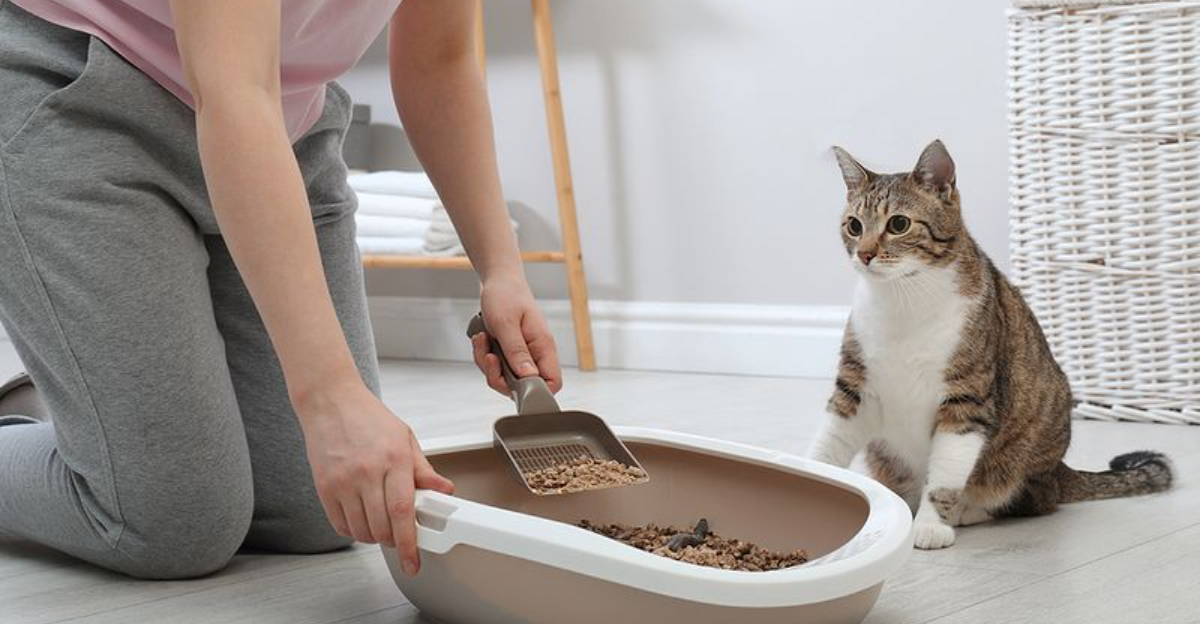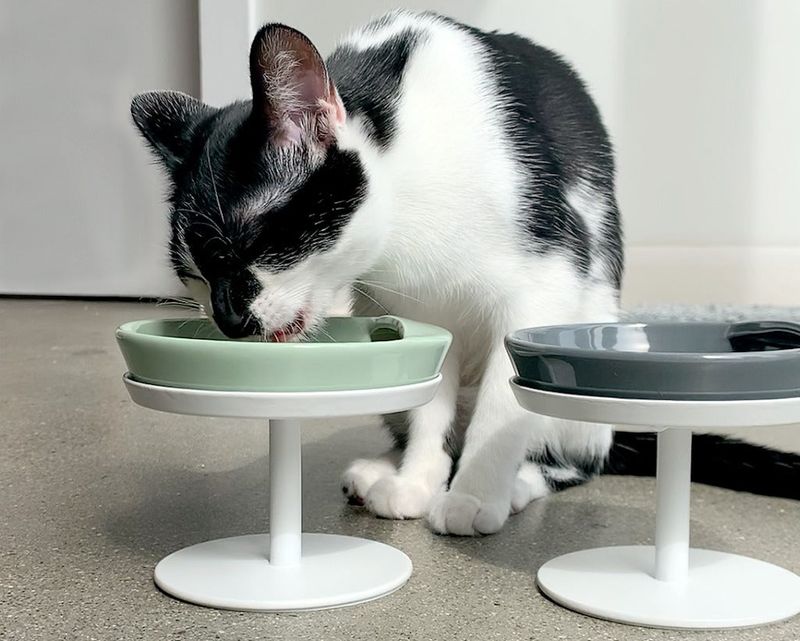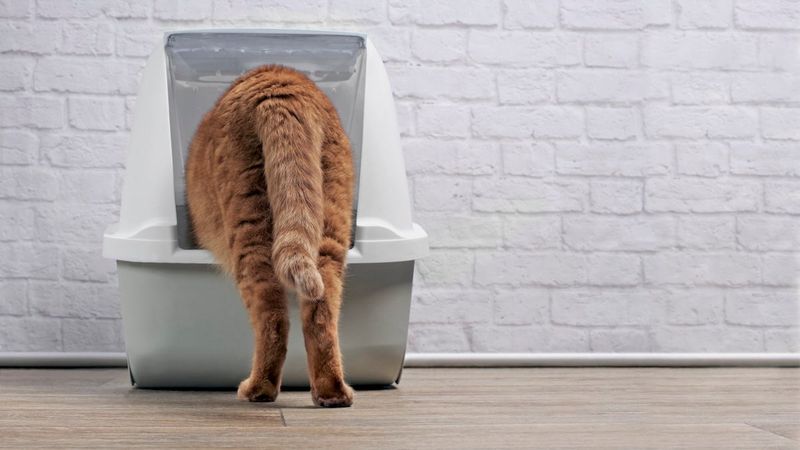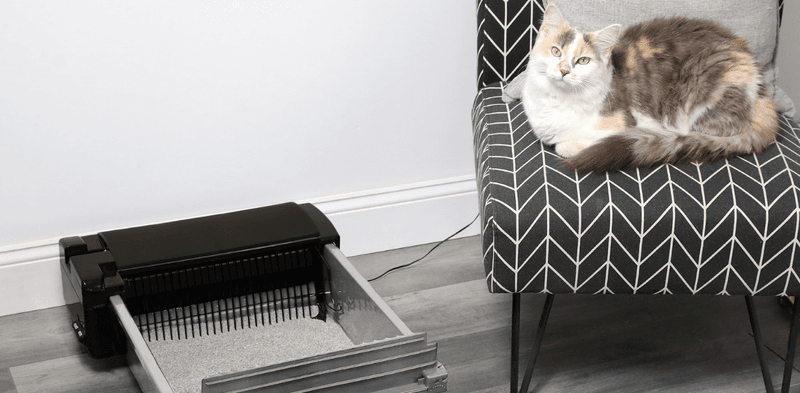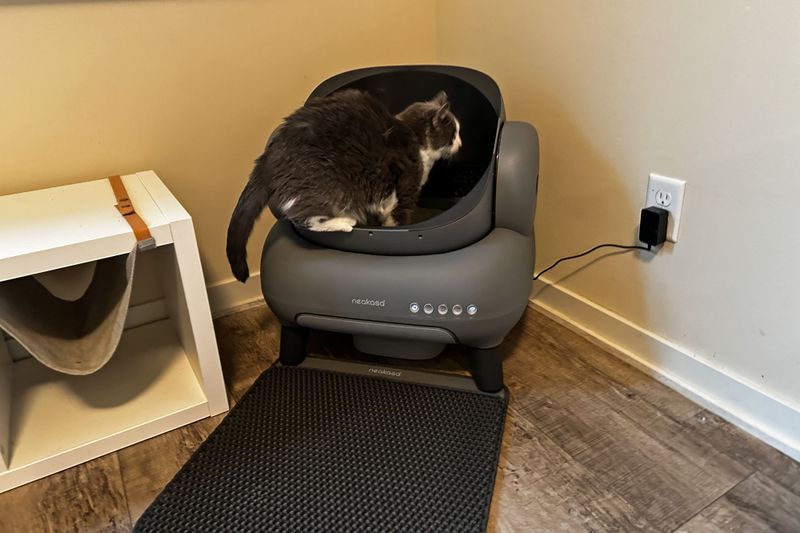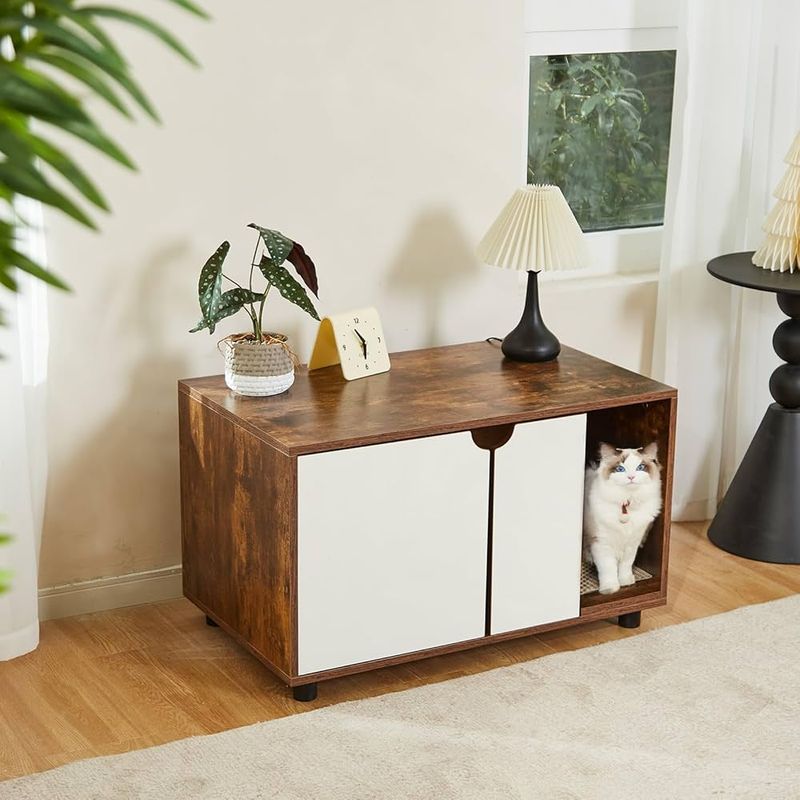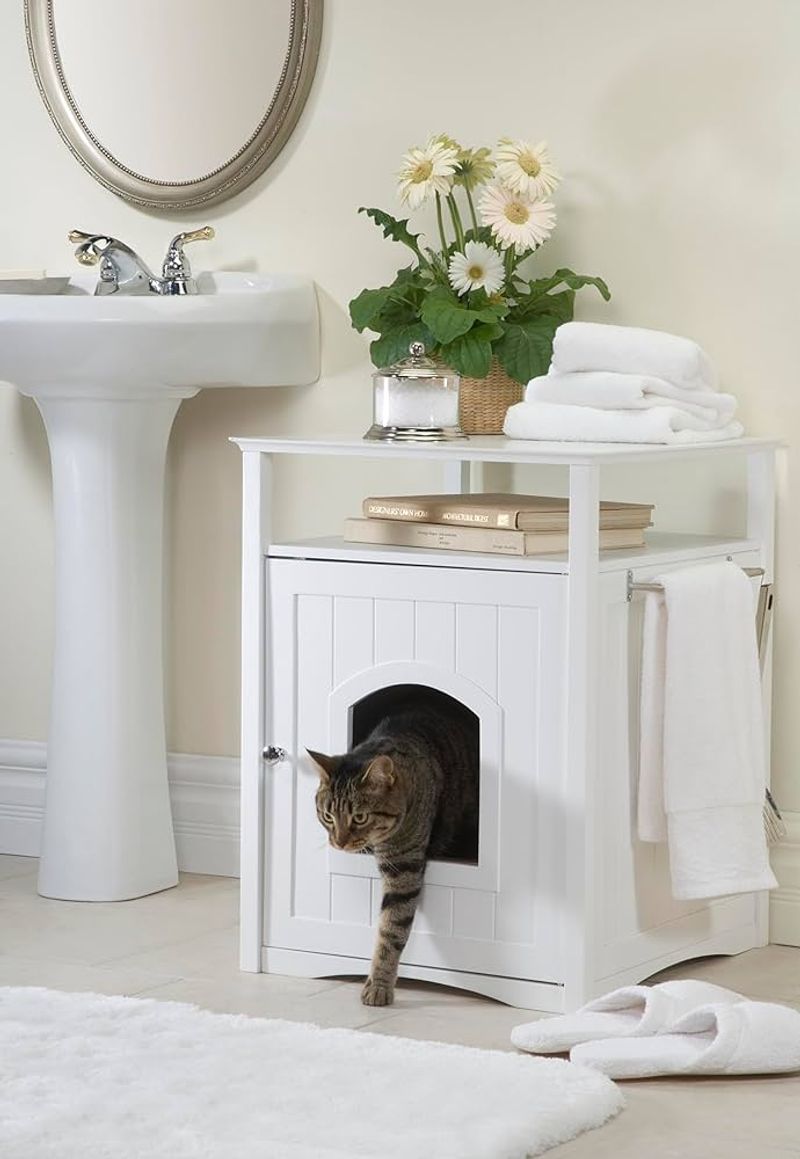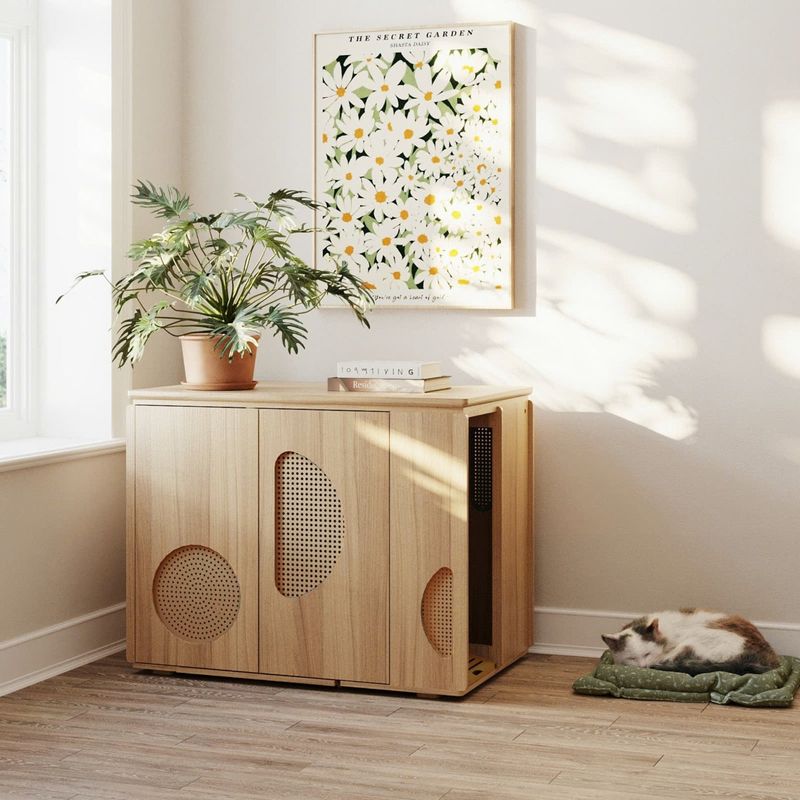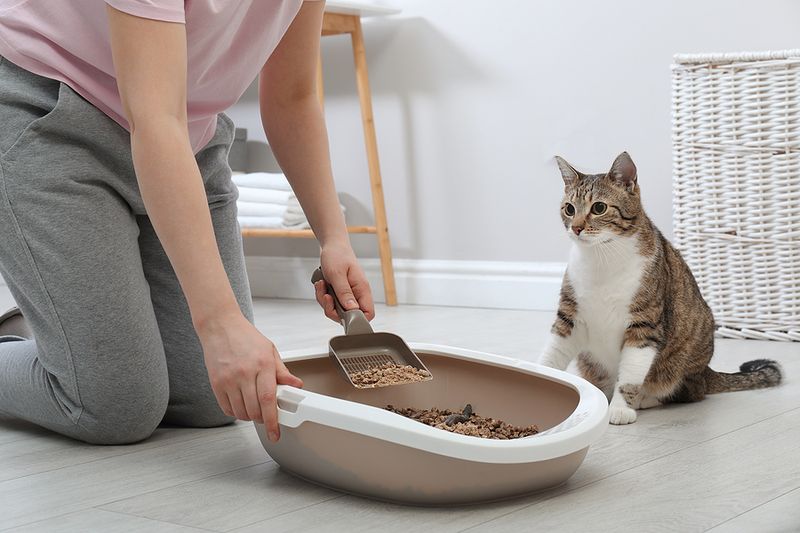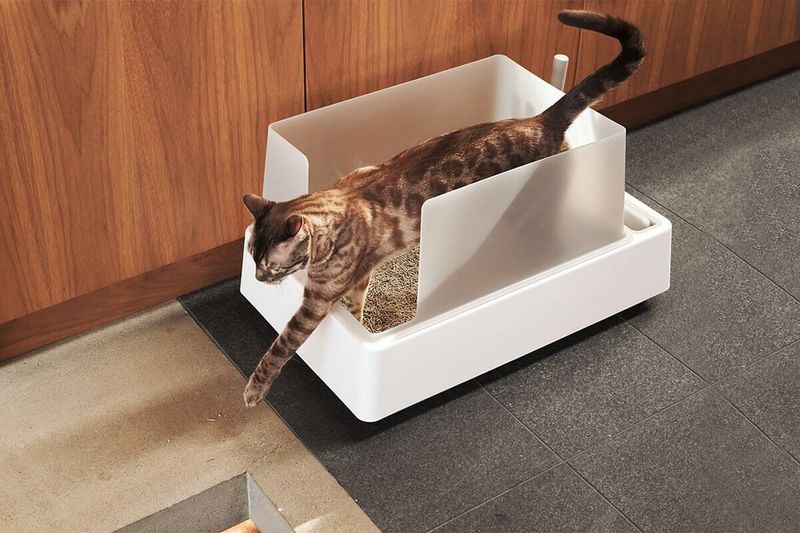📖 Table of Content:
- 1. Next to Their Food and Water
- 2. In a Loud Laundry Room
- 3. Busy Hallways or High-Traffic Areas
- 4. Near Strong-Smelling Products
- 5. In a Dark, Cold Basement or Garage
- 6. A Quiet, Low-Traffic Corner of a Room
- 7. In a Bathroom or Guest Room
- 8. Inside a Litter Box Cabinet or Enclosure
- 9. In a Room With Natural Light and Good Ventilation
- 10. On the Same Floor Where the Cat Spends Most of Their Time
When it comes to keeping your cat happy and your home clean, where you place the litter box matters more than you might think. While it’s easy to tuck it away in an out-of-sight spot for your own convenience, your cat may have a completely different opinion — and they’re not shy about showing it. The wrong location can lead to accidents, stress, or outright litter box avoidance.
Cats are creatures of habit, privacy, and comfort. They prefer a spot that feels safe, quiet, and easy to access. Unfortunately, many common litter box placements actually clash with a cat’s natural instincts — and that’s when the trouble starts. Understanding what your cat likes and dislikes can make a big difference in their behavior and litter box habits.
In this guide, we’re breaking down the 5 worst places to put your cat’s litter box — and the 5 best ones that your feline friend will appreciate. Whether you’re a new cat parent or just want to optimize your home setup, these tips will help create a more harmonious (and cleaner!) space for both you and your cat.
1. Next to Their Food and Water
Placing the litter box near your cat’s food and water bowls is a recipe for disaster. In the wild, cats instinctively separate their bathroom areas from where they eat to avoid contamination. It may seem convenient for you, but your cat will likely hold it in — or find another place to go. The scent alone can be off-putting and lead to appetite issues. Imagine being asked to dine next to a toilet — not exactly appealing, right? Over time, this setup could even cause stress-related behavior problems. Maintaining proper hygiene zones is essential for a happy cat. Keep their dining and litter spaces far apart for everyone’s peace of mind.
2. In a Loud Laundry Room
Though laundry rooms may seem like an out-of-the-way solution, they often come with disruptive noise. Cats are notoriously sound-sensitive and can be startled by the banging of a washer or the sudden start of a dryer cycle. Even vibrations from machines can make the area feel unstable. With unpredictable noise and movement, your cat may quickly associate the litter box with anxiety. As a result, they might avoid the room altogether. Quiet and calm are key when choosing a bathroom spot for your feline. Don’t let convenience compromise your cat’s comfort. Find a peaceful alternative they can trust.
3. Busy Hallways or High-Traffic Areas
High-traffic zones are a no-go for litter boxes. The constant foot movement and noise make it hard for cats to relax and do their business. In these areas, privacy is nearly impossible to find. Would you want to go in a place where someone could walk by at any moment? Cats value solitude and safety, especially during vulnerable moments like toileting. Placing the box in a frequently used hallway can cause anxiety, which may lead to litter box avoidance. Even if space is tight, your cat’s need for privacy shouldn’t be sacrificed. Look for a more secluded corner to keep them comfortable.
4. Near Strong-Smelling Products
Scents you might enjoy — like air fresheners or scented litter — can be overwhelming for your cat. Their noses are much more sensitive than ours, so what smells fresh to you might be a sensory overload to them. Cleaning products, deodorizers, or perfumed candles near the litter box can create an unwelcoming environment. Over time, your cat may associate these smells with discomfort. Even worse, strong odors might discourage them from using the box altogether. Always opt for unscented litter and avoid heavily scented areas. Think of the litter box as a scent-neutral zone. Your cat will appreciate the difference.
5. In a Dark, Cold Basement or Garage
At first glance, basements and garages seem like logical spots — out of sight and away from guests. However, these areas are often cold, damp, and dark, making them uninviting to your cat. Accessibility can also be an issue, especially if stairs are involved. If your cat has to work to get to the bathroom, they might choose not to go at all. Poor lighting adds another layer of discomfort and unease. Would you feel safe in a dim, chilly room every time nature calls? Probably not — and neither does your cat. Choose a warmer, brighter alternative that’s easier to reach.
6. A Quiet, Low-Traffic Corner of a Room
Every cat deserves a peaceful, low-traffic space where they can do their business without interruptions. Corners naturally offer a sense of enclosure and safety, which cats instinctively seek. This type of setup allows them to feel secure, even in a shared space. Plus, it keeps litter mess contained and out of the main flow of activity. Disruptions are minimal, and your cat can relax while they take care of business. You’ll likely notice fewer accidents and more consistent litter habits. A tucked-away corner works in almost any room of the house. Choose one that stays calm throughout the day.
7. In a Bathroom or Guest Room
Bathrooms and guest rooms often make perfect litter box spots due to their quiet nature and easy-to-clean surfaces. The occasional use by humans won’t usually bother a cat, especially if it’s predictable. Since cats prefer a bit of solitude, these semi-private rooms are a great balance between accessibility and calm. Ventilation from bathroom fans can help with odor control, too. You’ll also appreciate the convenience when it comes time to scoop and clean. As long as the door stays open for your cat, this location can be a win-win. Monitor the room’s temperature and lighting for added comfort. Cats thrive when their environment is just right.
8. Inside a Litter Box Cabinet or Enclosure
Stylish and functional, litter box furniture gives cats the privacy they crave. These enclosures help hide the box and reduce scatter, while also blending into your home’s decor. The key is to ensure there’s enough space and airflow inside. Some cats love the cave-like feel — it mimics natural denning behavior. Just avoid models that are too cramped or hard to clean. When designed correctly, these cabinets offer both comfort and discretion. Make sure your cat can enter and exit easily without feeling trapped. With a good setup, they’ll be more likely to use the box consistently.
9. In a Room With Natural Light and Good Ventilation
Natural light has a calming effect on many cats. Rooms with good airflow and sunlight feel more open and secure, making them inviting spots for a litter box. This kind of environment helps prevent odors from building up and improves air quality. Cats often gravitate toward these areas naturally, so adding a litter box there just makes sense. Keep the box away from direct sun to avoid overheating. Bright, pleasant surroundings put your cat at ease during vulnerable moments. It also makes it easier for you to maintain a clean and fresh-smelling area. Both you and your cat benefit from this setup.
10. On the Same Floor Where the Cat Spends Most of Their Time
Convenience isn’t just a human preference — cats appreciate it too. If your feline spends most of their time lounging upstairs, don’t make them trek to the basement to use the bathroom. Accessibility plays a big role in consistent litter box use. The easier it is to get to, the more likely they are to use it properly. Particularly for older or less mobile cats, minimizing stairs is a must. You wouldn’t want your bathroom several floors away either. Keep it close, and you’ll reduce stress and increase satisfaction. Location, in this case, is all about logic and comfort.
